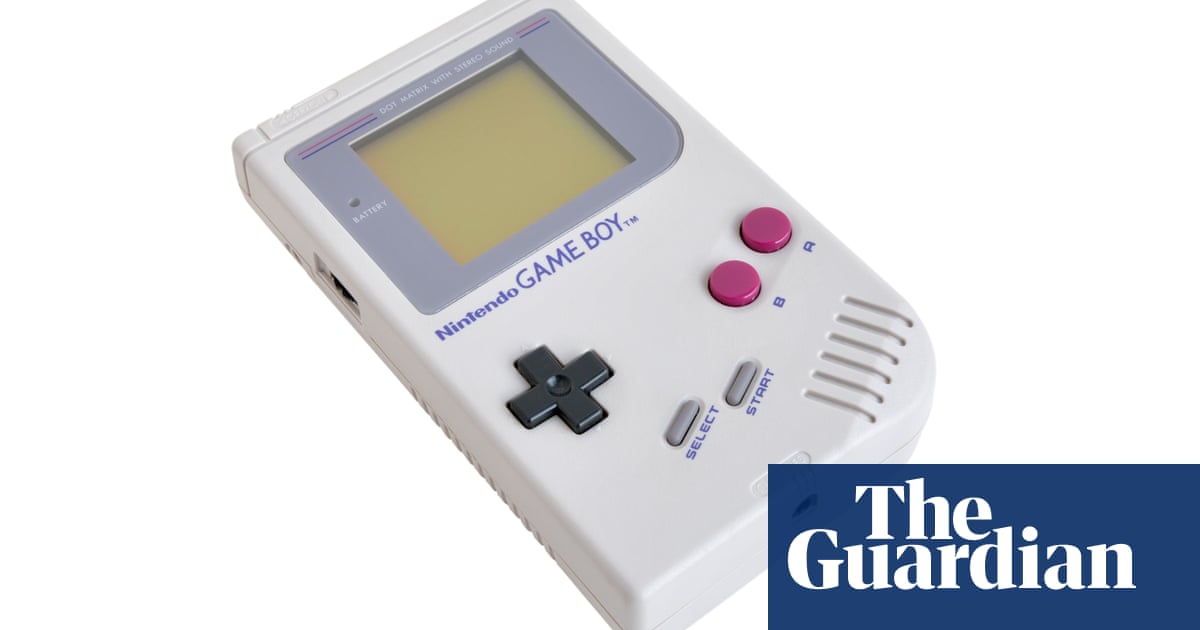
On April 21, 1989, Nintendo released a chunky grey game-playing rectangle to stores in Japan. It’s fair to say that nobody expected much of it. Internally, at Nintendo’s Kyoto HQ, the portable console was reportedly not a well-loved project. But within two weeks, it had sold out its entire 300,000-unit initial run. The Game Boy would arrive later that year in the US, and across the rest of the world over the next couple of years. Everywhere it went, it proved just as popular. Thirty-five years and almost 120m sales later, it is still the fourth best-selling games console in history.
Like Sony’s Walkman, the Game Boy is a tech design icon of its time, still instantly recognisable from its silhouette alone. Developed by a team led by Satoru Okada and Gunpei Yokoi in Kyoto, the Game Boy is perhaps the preeminent example of Yokoi’s “lateral thinking with withered technology” maxim, a do-more-with-less technological principle that endures at Nintendo to this day. It’s so simply designed – with four buttons and a cross-shaped directional pad – that you already know how to use it as soon as you look at it. Thanks to its greyscale screen, the battery lasted for days of play. And most importantly for accident-prone kids of the 90s (and their parents), you could throw it off a bridge and it would probably still work.
The Game Boy wasn’t the first handheld console, and it wasn’t even the best one of that era. It was chunky and retro-looking even for the late 80s. Its screen had no backlight, but it was also sensitive to glare from bright sunshine, so you had to go searching for the perfect amount of light, craning over the screen (or buy one of those big square portable lamps for it, which required even more batteries). The Atari Lynx and the Sega Game Gear, meanwhile, arrived not long after with far superior hardware and colour graphics.
But it was the Game Boy that became a best-seller, and spawned a line of direct and spiritual successors from the Game Boy Color and Game Boy Advance to the Nintendo DS and even its Switch, all consoles that you can hold in your hands. The reason why is that, unlike its rivals, it had extraordinary games whose vibrancy transcended the confines of its tiny greyish-green screen.
The best-remembered of these is undoubtedly Tetris. Tetris wasn’t specifically made for Nintendo’s pint-sized console – you could play it on computers from 1984 onwards – but it turns out that the Game Boy was made for Tetris. Alexey Pajitnov’s shape-slotting puzzle game found a perfect home on this little console, whose rudimentary graphical power was quite enough to render a few configurations of falling blocks. In the US and Europe, the Game Boy came bundled with the game – which is why, when you think of Tetris’s earworm theme tune, it’s probably the bleepy 8-bit Game Boy version that arrives in your mind.
You could also play Tetris against a friend, due to the Game Boy’s most forward-thinking feature: a port on its side that let you connect consoles together with a cable. It was this that would inspire Satoshi Tajiri, a quiet programmer who had a childhood fascination with bugs, to create the Game Boy’s most enduring game: Pokémon. Out of pixels and pure imagination, Pokémon conjured a world packed with characterful creatures in which kids and adults alike could lose themselves, trading and battling over those link cables. Released in the dying days of the Game Boy, it nonetheless became a phenomenon.
It remains incredible to me that such a nerdy little game – Pokémon battles are largely about numbers and type match-ups – became the single most profitable entertainment franchise on Earth, more so than Mickey Mouse and Star Wars. It’s a testament to the creative vision of its creators – and to the imaginations of 90s children, who were unbothered by the rudimentary presentation. But it also tells us something about the power and intimacy of handheld gaming. On televisions, gaming was rooted to the living room or the bedroom; on the Game Boy, it became part of family holidays, long car trips, lunch breaks at work. Games became part of the fabric of everyday life.
It’s perhaps this that has helped games such as Super Mario Land and the wistful, otherworldly The Legend of Zelda: Link’s Awakening live so long in the memories of those who played them. We remember playing Zelda on the train to work, at that first job where we met a lifelong friend; Pokémon after school, in the playground, with pals huddled around; Tetris on that holiday where we ended up in a high-score stand-off with our brother. A lot of people still have their Game Boys, tucked in a drawer or an attic box. Their sentimental value is such that people can’t quite bring themselves to throw them out.
There’s a photo I really love of four kids with 90s bowl-cuts crowded around a woman focused intently on a Game Boy. You can just about make out the cartridge inside; it’s Super Mario Land. As far as I know the provenance of this photo is lost to time, but I like to think that it’s her Game Boy, and she’s showing the kids the way through one of its tougher levels. This image is a perfect encapsulation of this console and how it felt to play it, for me. The Game Boy was played by everyone, girls and boys, men and women, shared among families; it was a portal to other, smaller worlds, and it introduced millions to the magic of games.

